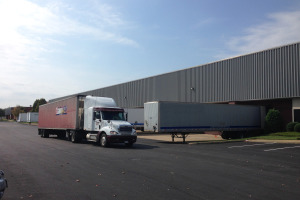 Listening to the news the other day I was struck by the fact that there is a Cabinet Level position for Transportation, rather than for Supply Chain. Do not get me wrong, transportation is important, it provides time and place utility to everything. Whatever we make and consume is impacted by our transportation system. But why isn’t there a Secretary of Supply Chain, rather than a Secretary of Transportation? There is a difference. Supply Chain encompasses the entire spectrum of activities surrounding the movement of goods. We are talking storage, transportation, regulation, infrastructure, technology, and much more. Managing a supply chain in today’s world has become more important and more complicated than ever.
Listening to the news the other day I was struck by the fact that there is a Cabinet Level position for Transportation, rather than for Supply Chain. Do not get me wrong, transportation is important, it provides time and place utility to everything. Whatever we make and consume is impacted by our transportation system. But why isn’t there a Secretary of Supply Chain, rather than a Secretary of Transportation? There is a difference. Supply Chain encompasses the entire spectrum of activities surrounding the movement of goods. We are talking storage, transportation, regulation, infrastructure, technology, and much more. Managing a supply chain in today’s world has become more important and more complicated than ever.
What is the Supply Chain? Let’s start with what it is not. It is not the demand for goods and services. It is not the manufacture or development of products, processes and services. What is it? It’s the manifestation of all the physical aspects of satisfying demand thru the physical movement and storage as well as the information flows, data accumulation, analysis, decision-making and use of this information to move, store, deliver, and pay for demand.
Economics revolves around the relationship of Supply and Demand. Supply Chain revolves around the components associated with Supply to support Demand. One fifth of the world’s economy is tied up in SUPPLY CHAIN activity. One fifth!! It’s important and impactful to just about everything and as trade continues to become more global, so does the supply chain.
Here is a current example of how important the supply chain can be. It also shows how many touch points and how many things need to go right, for it to function effectively. Riverside Logistics, as a third-party logistics company based in Richmond, Virginia, manages the distribution of goods for a number of companies in the medical supply business. In the current pandemic environment, these companies are manufacturing and selling the masks needed by everyone to protect themselves. These masks consist of materials that are sourced from many countries across the globe. These sources are tapped into to provide the raw materials to create masks. The paper, the fabrics, the elastic, etc. These materials are “sourced”, then “procured”, then “shipped” to a manufacturing location, then combined into a mask, then stored until ordered, then shipped, then delivered, then re-shipped, then purchased and finally (then) used by a consumer or end-user. Possibly, even sent into a reverse-logistics system and sent back somewhere for destruction or re-purposing. Is your head spinning yet? All the pieces of this process are part of a “chain” of events, with many moving parts, involving “supply”. Each link in the chain is a distinct and necessary piece of the overall creation of time and place utility relevant to the goods being made.
Obviously, the Supply Chain is important. How well it functions from a cost, service and capability standpoint determines the overall quality of the “Chain”. Usually the utility of the “chain” is derived from the tradeoff between cost and service. “When” and the “How Much” are key decision-making components considered in the Supply Chain. However, there are other equally important aspects to the chain. Their importance depends on the goods in question, their value, the time of year, the criticality of speed to market and many other important factors.
Supply Chains can be relatively simple or they can be quite complex. There are a myriad of rules, regulations and practices that revolve around executing a quality supply chain. That undertaking can be quite substantial. A third-party logistics company usually can provide services that improve your supply chain, because that is their area of expertise. They review many complex supply chains in whole or in part depending on the client, their business practices and the role where they can provide value. The key is to improve the supply chain and to provide a client with a competitive edge. Clearly a well-executed supply chain can have a substantive impact on the client’s ability to maintain a strong competitive posture in their business environment. You can make the best products in the world, but they have no value if you cannot get them to the end-user when they need them. Time and Place utility!!

